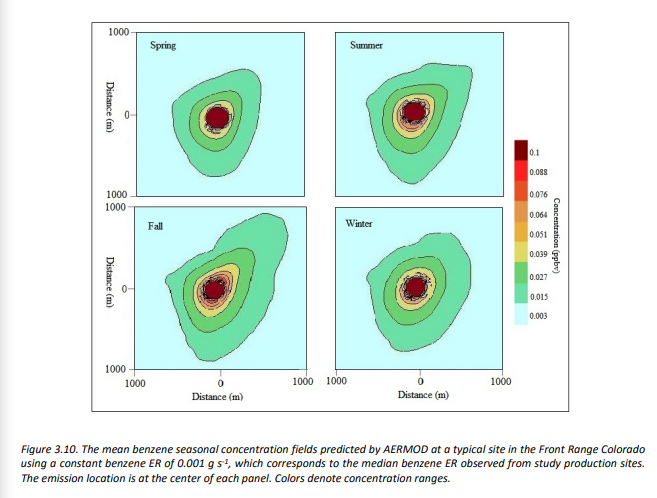Efforts of far left environmental groups to push the drilling site setback from 500 feet to 2000 feet do NOT FOLLOW THE SCIENCE.
Final Report: Human
Health Risk
Assessment for Oil
& Gas Operations in
Colorado
October 17, 2019
Executive Summary
In 2017, the Colorado Department of Public Health and Environment conducted a screening
assessment and systematic review of potential risks associated with chemicals released to the
air from oil and gas operations. The assessment found that the concentrations of chemicals
detected in air near oil and gas operations were consistent with low risks of harmful health
effects. Systematic review of 27 studies of populations residing near oil and gas operations
found limited and inconsistent evidence for harmful health effects.
Exposure modeling for most chemicals indicated that acute exposures were below guideline
levels for all hypothetical people and facilities. At the 500-foot distance, for a small number of
chemicals (including benzene, toluene, and ethyltoluenes), the highest estimated acute
exposures exceeded guideline levels at the most-exposed (downwind) locations, in isolated
cases by a factor of 10 or more during oil and gas development activities, particularly during
flowback activities at smaller well pads. Those highest predicted acute exposures decreased
rapidly with distance from the hypothetical facilities, but remained above guideline levels out to
2,000 feet under a relatively small number of oil and gas development scenarios. Our
identification of these estimated exceedances of acute health guidelines is highly conservative,
in that these highest-estimated exposures occur when the highest chemical emissions are
highly concentrated by “worst-case” meteorological conditions onto a hypothetical person who is
outdoors or in a highly ventilated area, which might happen only rarely.
We also estimated chronic exposures for production operations, which can continue for up to 30
years after well development, as well as for some large flowback operations that can last 14–15
months. At the 500-foot distance from the facility, chronic exposures during the 14–15-month
flowback activities were far below guideline levels for individual chemicals and only slightly
above guideline levels for combined exposures to multiple chemicals with neurotoxicity or
hematological critical effects (which include n-nonane, benzene, m+p-xylene, and
trimethylbenzenes). Extending the exposure period to also include the preceding drilling and
fracking activities led to similar results.
At the 500-foot distance from the facility, all chronic non-cancer exposures
during production activities were below guideline levels, and the average incremental lifetime
cancer risk from chronic benzene exposure was 5-in-one million or less (dropping below 1-inone million before the 2,000-foot distance).
North Front Range Oil and Gas Air Pollutant Emission and Dispersion
Study
Prepared by:
Colorado State University
Department of Atmospheric Science
September 15, 2016
Figure 3.10 shows the simulated seasonal mean benzene concentration fields for the simple case
considered here: constant emissions at a production site median ER of 0.001 g s-1
. One can scale the
benzene concentration field for other emission rates by multiplying the modeled concentration at any
point by the ratio of the new emission rate divided by the modeled ER of 0.001 g s-1
. The emissions location
in the figure is positioned at (x; y) = (0 m; 0 m) as an area source and the simulation was conducted with
a horizontal resolution of 50 m.
